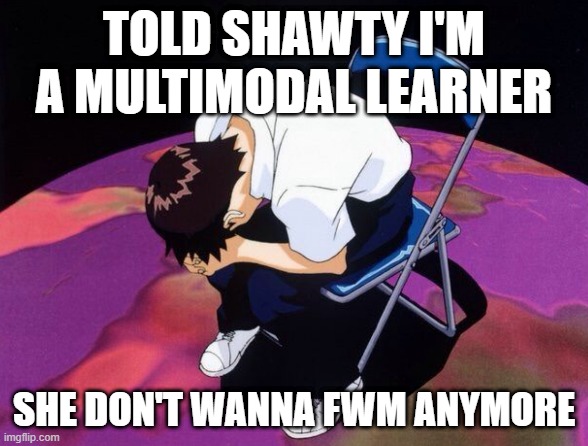Author’s Note: Listen, I got a lot of swag, and I will add my iconic Jordan Flair™ to this soon, because I have a lot of thoughts on this…but right now, this is for that sweet, sweet COMPLETE score.
Communication is constantly evolving, and the written word has expanded beyond traditional text-based formats. Two recent articles, “An Introduction to and Strategies for Multimodal Composing” by Melanie Gagich and “Beyond Black on White: Document Design and Formatting in the Writing Classroom” by Michael J. Klein and Kristi L. Shackelford, shed light on the transformative potential of multimodal composing and document design in writing instruction.
Gagich invites us into the realm of multimodal composing, where text, images, audio and video converge to create dynamic and engaging communication. In a world saturated with multimedia content, Gagich argues that writers must adapt to new modes of expression to effectively connect with diverse audiences. Through practical strategies and insightful examples, she empowers writers to harness the power of visual and digital literacy to craft compelling multimodal compositions.
Meanwhile, Klein and Shackelford delve into the realm of document design and formatting, urging us to move “Beyond Black on White” (haha, see what I did there?) They advocate for the integration of layout, typography, color and visuals to enhance the readability and persuasiveness of written documents. By recognizing the importance of visual elements alongside textual content, Klein and Shackelford highlight how document design can transform written communication, making it more accessible, engaging and impactful.
Together, these articles challenge traditional notions of writing instruction, urging educators to embrace a more holistic approach that encompasses both textual and visual elements. In an age where attention spans are fleeting and information overload is rampant, mastering the art of multimodal composing and document design is essential for effective communication.
Imagine a student crafting a persuasive essay not only with compelling arguments but also with captivating visuals and multimedia elements that reinforce their message. Picture a professional document that not only communicates information clearly but also engages the reader through thoughtful design choices. These are the possibilities that emerge when we expand our understanding of writing to include multimodal and visual literacy.
In conclusion, Gagich, Klein and Shackelford offer valuable insights into the transformative potential of multimodal composing and document design in writing instruction. By embracing these principles, educators can empower students to become effective communicators in the digital age, equipped with the skills to navigate and thrive in an increasingly visual and multimedia-driven world.





Leave a Reply